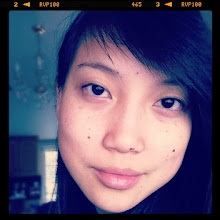 |
| Sewing a patch with the Spanish crest onto the Hulk |
With that said, packing is crazy. These two months here have made me forget how crazy it is to try to stuff everything back into a bag!
I have an important decision to make. I've already decided that I don't want to travel for 2.5 weeks with my laptop because I probably won't have much time to use it. Plus, it's heavy and takes up a lot of space. My laptop, I think, wins the award for Largest and Heaviest Laptop in Spain. Seriously.
So here are my options:
1) Mail is back home. Shipping ranges from 50 Euro to 200 Euro and up!
2) Have Alex ship it home for me because he has time to. Will have to pay him back.
3) Pack it in Naomi's checked luggage and get it back from her later.
Another important thing to think about is the mylars! Those three sheets of plastic document the process and evolution of my project. They're 24" x 36", so they won't fit in my backpack. I think a few people are shipping theirs back to Berkeley together, but again, the shipping costs are high. I could also send it back with Naomi.
I've had to throw out or give away things that I know I won't need anymore--my regular-sized sunscreen, lentils, some candy, the bowl and plastic boxes that I bought here. I'm going minimal again so I can pack light! I bought some Febreeze (yup, I found the name brand in Torrevieja) and rebottled it in a 33 mL spray bottle, and poured the laundry detergent into a 33 mL bottle as well. My liquids bag is about to burst.
It also pays to think about how you will travel afterwards. If I was taking the train to travel around Europe, I could have more luggage than just a backpack because the train system doesn't charge for extra bags (and you don't have to have a tiny bag for liquids!). If I was flying RyanAir, I would have to be very, very careful about the size of my bag. I'm flying EasyJet, though, and they're more lenient on bag sizes.
Plan ahead for packing and you will be alright!















































